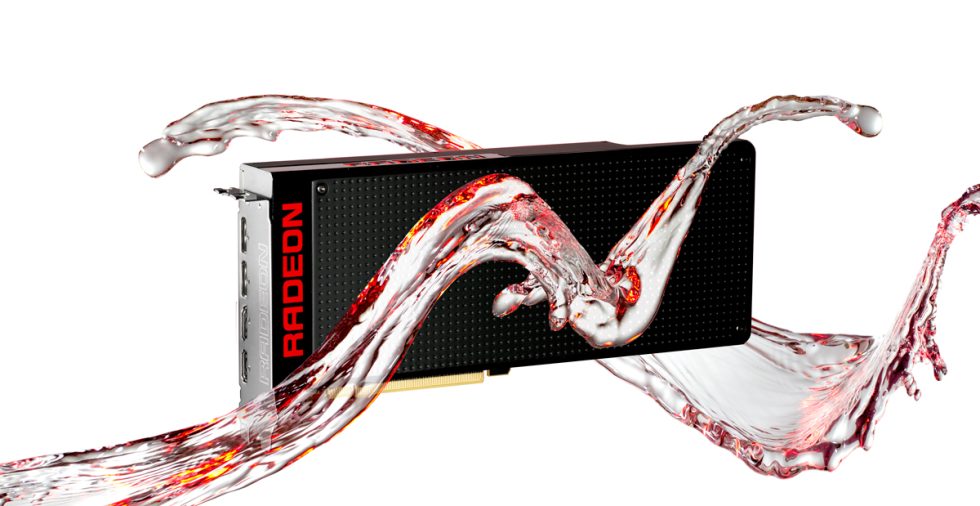
After first being teased at E3 2015, AMD has finally made its dual Fury GPU official. Dubbed the Radeon Pro Duo, the card combines two of AMD's top tier Fiji GPUs (as used in the Fury X and Fury Nano) onto a single card, resulting in a claimed 16 teraflops of compute performance. The price for such power? A mere $1499 (UK pricing TBC, but probably around £1200). The Radeon Pro Duo goes on sale in "early" Q2 2016.
While that price might seem steep, it is substantially less than Nvidia's most recent dual dual-GPU offering, the Titan Z, which launched at $3000 (£2399) before dropping to $2000 (£1499). AMD's previous dual-GPU card, the R9 295X2, launched at $1500 before dropping to less than $1000 months after launch.
You do get a lot for your cash, though. Both GPUs on the Radeon Pro Duo sport the full array of 4096 stream processors, 256 texture units, and 256 ROPs. There's 8GB of high bandwidth memory on board, split between the two GPUs, running at 1GHz on a substantial 4096-bit bus for 512GB/s of bandwidth. Like the Fury X, the Radeon Pro Duo is liquid cooled via an all-in-one unit with a 120mm radiator.
AMD hasn't dropped exact size details on the Radeon Pro Duo just yet, but it looks to be substantially smaller than the huge 307mm length of the R9 295X2. AMD's press shots show a Duo reference card installed on an MSI X99A Raider ATX motherboard, and the Duo appears to be the exact same width as the board, which would make it a mere 244mm (9.6 inches) long. That's shorter than a reference GTX 980 Ti, which runs at 269mm (10.5 inches).
However, the Radeon Pro Duo does extend above the standard PCIe card height, meaning it may not fit in all cases. There's also the small matter of powering it. While AMD hasn't given exact power consumption figures, the Radeon Pro Duo requires three 8-pin PCIe power connectors to function. The Fury X typically consumes around 220W under load on average, although it can peak as high as 450W, meaning you'll need a strong power supply to keep the juice flowing.
-
This is not the new Radeon RX 480; it's just a sweet photo of an AMD graphics card. We don't know what the RX 480 looks like yet.
-
-
-
-
-
-
-
-
-
-
Interestingly, while normal consumers will be able to purchase it, AMD is marketing the Radeon Pro Duo at content creators, or more specifically, VR content creators. The company has partnered up with Crytek and its VR First initiative to kit out the VR First Lab at Bahçeşehir University in Istanbul with Radeon Pro Duos, and promises to extend the scheme to the likes of Stamford and UCL at a later date. AMD also says several Hollywood studios are lined up to use the card.
While AMD's Radeon Pro Duo is aimed at existing VR devices and content creation, AMD's Roy Taylor did hint at what the future might hold for the company during a pre-briefing call, outside of sticking an entire PC inside a headset:
"We are already working with a headset manufacturer, unannounced, with a 4K per eye headset. It exists. It's quite, quite beautiful, and we believe that the roadmap to go into higher resolutions will happen more quickly than is probably expected. Once you've seen a high resolution VR experience, you can see that it's really quite beautiful."
That roadmap begins this later year when AMD releases its new Polaris architecture, which is based on a 14nm FinFET manufacturing process. AMD will be showing off the high-end version of Polaris, Polaris 10, at this year's GDC. Indeed, Polaris—or Nvidia's upcoming Pascal—is perhaps the biggest reason not to buy Radeon Pro Duo, even if you can afford it.
reader comments
103